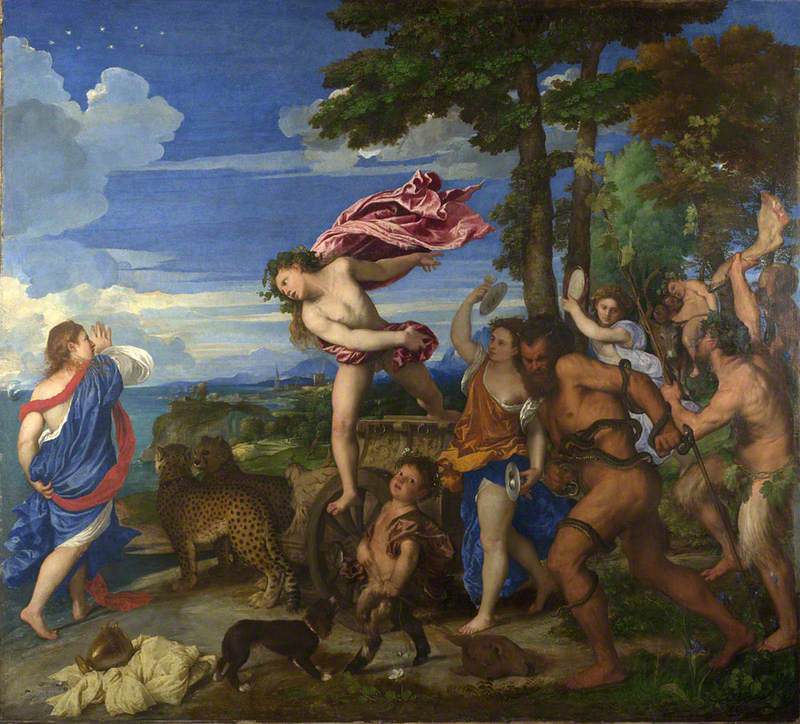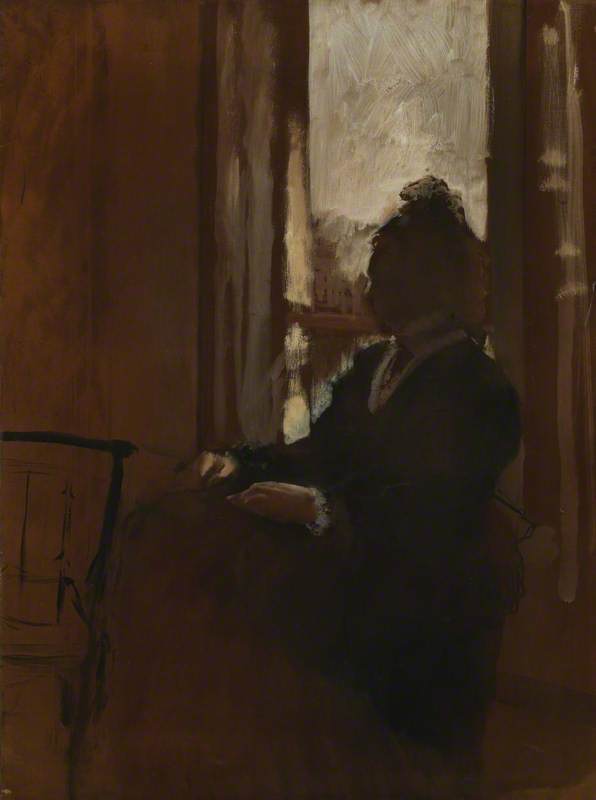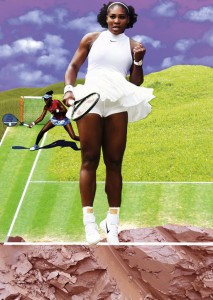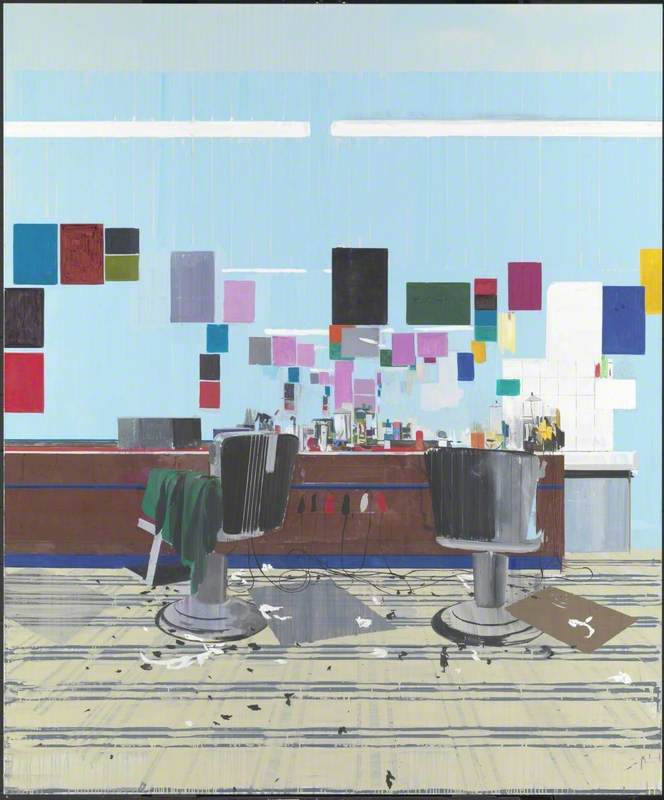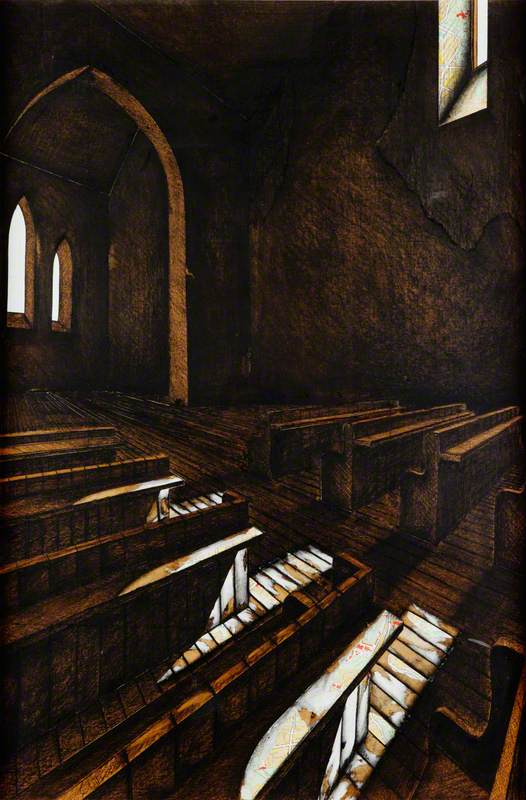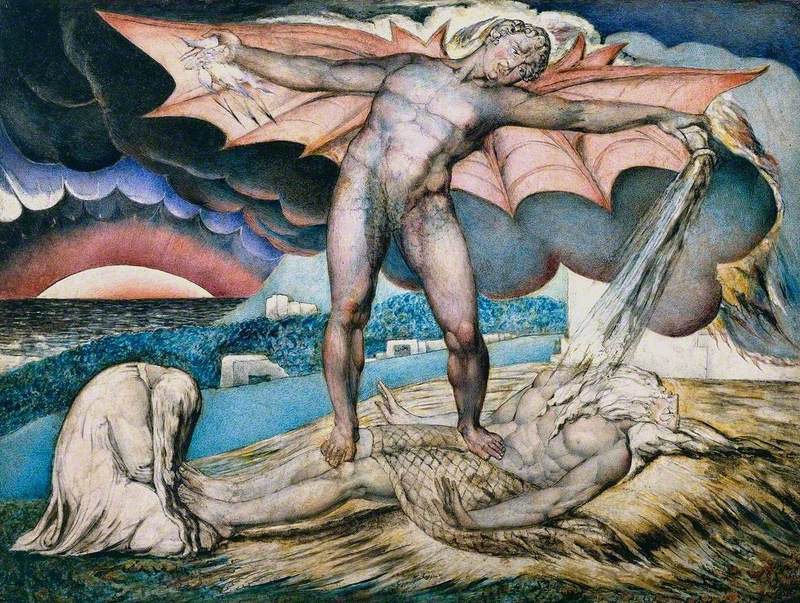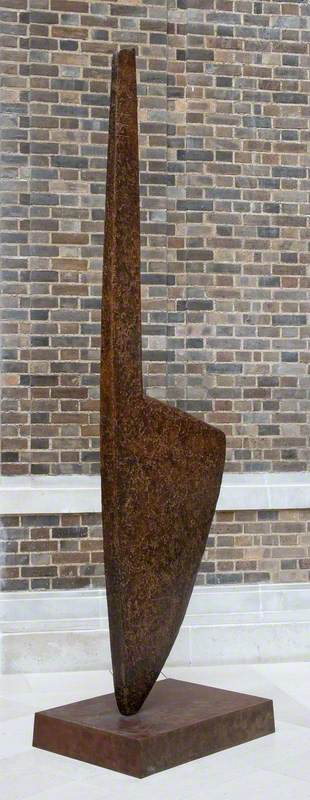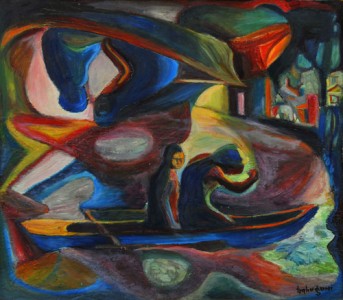Claudette Johnson's practice is characterised by closely examining the limits and barriers thrown at black women both past and present. Her ambition is to take back black women's experience 'which has been distorted, hidden and denied' in all corners of their lives. She deliberately works on a massive scale to elevate her subjects, allowing them to take up a space that is entirely theirs – a space that echoes who they are, their experience, their struggle and their joy. This deeply emotional art form is rooted in Johnson's belief in finding purpose through art.
Standing Figure with African Masks is one of her few self-reflections, where she exposes herself, honestly and critically. A confident woman is pictured with a strong and supportive hand on her hip, suggesting her self-reliant nature. She stares down at the viewer, with a wise and knowing aura in her eyes. Johnson offers the viewer a temporary lens into her reality, whilst revolutionising the concept of reflections as we realise small facets of ourselves through her presence.
The woman is placed in front of an abstract background, crafted from irregular shapes that resemble shards of shattered glass. Shades of rich azure and cyan whisper secrets of a cold and uncomfortable past. However, Johnson refuses to play the role of a damsel in distress, a role that black women are repeatedly typecast into. Portraiture acts as her weapon to break this narrative and rewrite her own.
Johnson's profound interest in perspectives translates clearly in this artwork; she plays with brushstrokes that appear eccentric and flamboyant but, on the other hand, seem to carry a chaotic and confusing grace. Johnson leaves this up to our interpretation, clearly deciding against making her image more palatable for the comfort and digestion of her viewers.
The standing woman's assertiveness is subtly juxtaposed with the timidity of the masks that shadow behind her. Rather than obstructing, the masked figures appear to mimic her stance. Their flexed bodies evoke a sense of movement amongst them.
As they are facing the main subject, the viewer is left to assume that they're slowly moving inwards, becoming more involved and relevant to the woman – perhaps these are figurative memories of hers, experiences and thoughts that tie the woman to her heritage.
As they are positioned neither inside nor outside of the canvas, we realise that customs are constantly changing, being remoulded and could easily be forgotten. Johnson urges that we take pride in our culture and continue to self-educate so that it can live on for many generations. From a post-colonialist viewpoint, the African figures may be resisting western appropriation and drawing closer home, to their roots and rightful owner.
The woman's relaxed posture indicates a comfortable familiarity between the portrait and the viewer. Despite the fact that the figure is an embodiment of Johnson, she intentionally leaves herself unnamed in the title of this piece, enabling many people to resonate with her regardless of the obscurity of their individual experiences.
Isabelle Ajani, second place winner of Write on Art 2020, Y10/11

